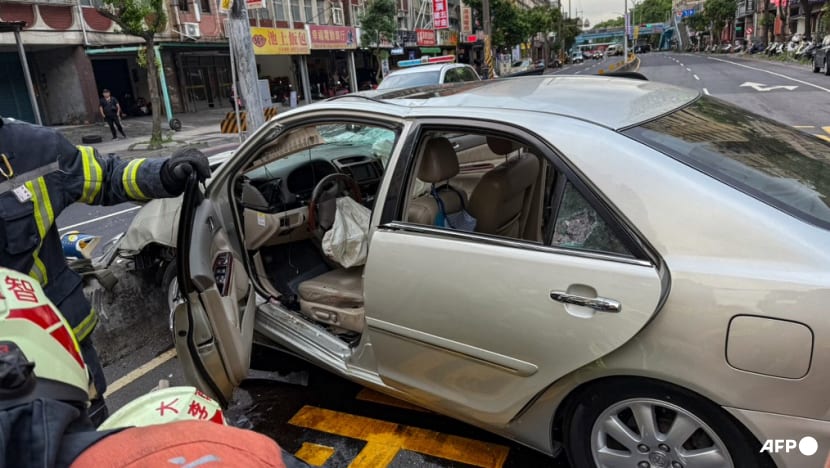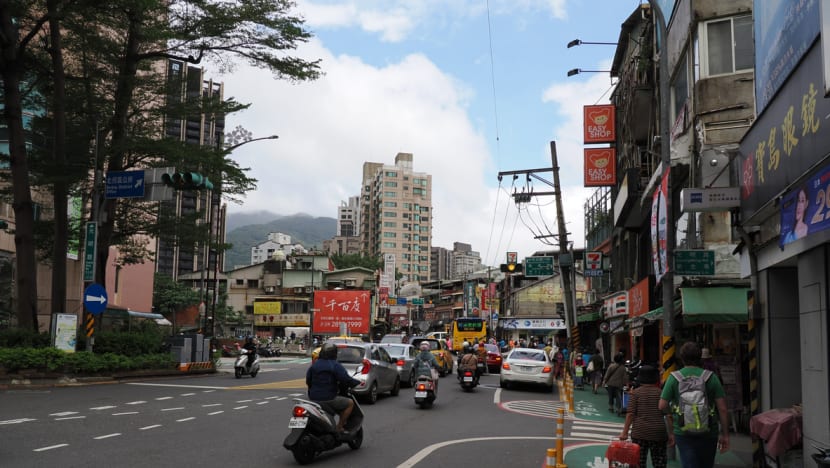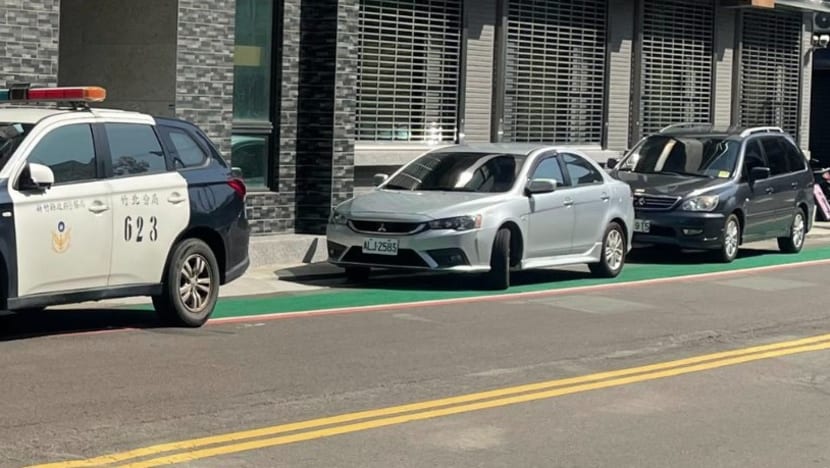Commentary: Why are Taiwan’s roads so deadly for pedestrians?
Recent fatal accidents in Taiwan have triggered swift responses from officials. But without structural reform and clear accountability, its roads remain dangerous for pedestrians, says Dr Tsu-Jui Cheng, a professor at the National Cheng Kung University.

The accident in Taipei killed at least three people and injured 12 others. (Photo: AFP/Fire Department of New Taipei City)

This audio is generated by an AI tool.
TAINAN, Taiwan: A series of fatal traffic collisions in Taiwan has reignited public scrutiny of pedestrian safety and renewed criticism of the government’s piecemeal, reactive approach.
On May 19, a 78-year-old driver crashed into a group of mostly students during school dismissal in New Taipei City, killing three and injuring 12. The very next day, the Ministry of Transportation and Communications (MOTC) announced that it would lower the licence renewal age for senior drivers to 70 from 75, along with additional evaluation tests.
On the same day, a driver suffering from epilepsy fatally struck a man accompanying his wife on a walk in Tainan city. The following day, the MOTC proposed legal changes that would link medical and insurance records, so that drivers who suffer a recent seizure would automatically be flagged for licence re-evaluation.
On May 23, just two days later, an unlicensed driver in Taipei crashed into two scooters, three cars and a bus, injuring himself and seven others. Shortly after, the MOTC announced plans to raise the penalty for unlicensed driving to the same level as those for drink driving.
These incidents represent just three of the vehicle-pedestrian collisions that took place in a single week. While swift announcements followed each incident, it seems the authorities are seeking quick fixes under pressure from the media and the public, rather than by investigating the root causes and creating a comprehensive plan.
“LIVING HELL FOR PEDESTRIANS”
Pedestrian safety in Taiwan has long been a subject of public concern. International attention was drawn to the issue in December 2022, when a CNN report described Taiwan as a “living hell” for pedestrians.
That month, a 30-year-old mother and her one-year-old son were killed after a public bus making a left turn hit them as they crossed an intersection in Taichung city. Two years later, again in Taichung city, a public bus making a left turn struck two university students at a pedestrian crossing, killing one of them.
In both cases, driver error was a factor - but so too were poorly designed intersections.
Despite repeated calls for reform, much of Taiwan’s road infrastructure still prioritises vehicles over people.
Road design guidelines are mostly outdated, driving tests fail to reflect real-world conditions, pedestrian infrastructure is lacking, and enforcement of traffic laws remains patchy at best.
As a result, informal traffic rules have taken hold based on local knowledge and experience, creating a chaotic traffic environment where each road user is left to fend for themselves. Such factors contribute to aggressive driving behaviours and a hostile traffic atmosphere.
While official statistics show a year-on-year decline in pedestrian deaths - 62 in January 2025, down from 82 a year earlier - the walking environment for many remains unchanged.
Pedestrians often find themselves forced into traffic lanes due to the absence of pavements and sidewalks. According to 2023 data, 46 per cent of roads that are 12m or wider do not have sidewalks.
Where they do exist, they are frequently blocked by businesses, residents, or illegally parked vehicles. Green-painted “sidewalks” – narrow stretches of road painted green to indicate pedestrian space - offer no real protection, and pedestrians typically lack the right of way.
Even Taiwan’s own officials acknowledge the scale of the problem. Transportation Minister Chen Shih-kai recently admitted that Taiwan’s traffic incident and casualty rates are “indeed higher” than in other places.


GLOBAL PUSH FOR SAFER ROADS
The global conversation on road safety has shifted to a comprehensive Safe Systems approach, which incorporates five principles that at its core assumes human error is unavoidable and aims to mitigate mistakes by designing safer roads, vehicles and related policies.
This shifts the focus away from blaming the individual behind the wheel for what are often-times systemic flaws in the system.
Despite this, Taiwan has been noticeably absent from high-level discussions and on-the-ground implementation of road safety initiatives. Their reactive rather than proactive attitude may stem from accountability issues within the government.
For instance, the MOTC oversees road planning, yet the responsibility for road design lies with the National Land Management Agency within the Ministry of the Interior. This split in responsibilities may appear practical on paper, but it inadvertently leads to a fragmented system where agencies focus on technical compliance rather than driving structural reform.
Yet there have been moments of promise. Taiwan's winding streets and vibrant temple festivals have already showcased a glimpse of what a pedestrian-priority environment could look like.
Governments, communities and businesses have occasionally converted roads into pedestrian-friendly spaces to host events. However, it is clear that a more formalised and systematic overhaul of roads and streets is crucial to fully realise this potential.
The impact of newly established pedestrian-priority zones in Taipei remains uncertain, and the EcoMobility World Festival in Kaohsiung in 2017 stands closest we have come to such an initiative.
To make real progress, significant institutional reforms are imperative, and accountability must be established to ensure that people in Taiwan do not wait “100 years” for a safe pedestrian space, as a 2023 report by the then Construction and Planning Agency put it.
Ultimately, the choice between pursuing political gain and preserving lives should be a no-brainer.
Dr Tsu-Jui Cheng is Assistant Professor, Department of Transportation and Communication Management Science, National Cheng Kung University.



















